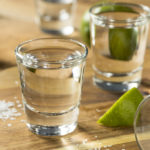Is the Wax On Produce Safe?
Not really.
Another reason to buy local and organic, rather than remote and conventional is to avoid eating wax.
From a manufacturing point of view, where cost is of utmost importance, preserving a food for as long as possible to reduce lost would be a top priority.
If wax is applied to foods, it reduces the chance of the food actually shrinking due to dehydration and keep it looking fresh, shiny and ‘new’. It also makes it appear, in my opinion, quite artificial. It’s also the perfect vehicle to add more chemicals to keep the produce free of bacteria or fungus that might cause it to rot during its thousands of miles of travel.
If you were to review the components of wax applied to food, you might see something like the following, from the FDA’s website:
“TITLE 21–FOOD AND DRUGS
CHAPTER I–FOOD AND DRUG ADMINISTRATION
DEPARTMENT OF HEALTH AND HUMAN SERVICES
SUBCHAPTER B–FOOD FOR HUMAN CONSUMPTION (CONTINUED)
PART 184 — DIRECT FOOD SUBSTANCES AFFIRMED AS GENERALLY RECOGNIZED AS SAFE
Subpart B–Listing of Specific Substances Affirmed as GRAS
Sec. 184.1976 Candelilla wax.
(a) Candelilla wax (CAS Reg. No. 8006-44-8) is obtained from the candelilla plant. It is a hard, yellowish-brown, opaque-to-translucent wax. Candelilla wax is prepared by immersing the plants in boiling water containing sulfuric acid and skimming off the wax that rises to the surface. It is composed of about 50 percent hydrocarbons with smaller amounts of esters and free acids.
(b) The ingredient meets the specifications of the Food Chemicals Codex, 3d Ed. (1981), p. 67, which is incorporated by reference. Copies are available from the National Academy Press, 2101 Constitution Ave. NW., Washington, DC 20418, or available for inspection at the National Archives and Records Administration (NARA). For information on the availability of this material at NARA, call 202-741-6030, or go to:http://www.archives.gov/federal_register/code_of_federal_regulations/ibr_locations.html.
(c) In accordance with 184.1(b)(1), the ingredient is used in food with no limitation other than current good manufacturing practice. The affirmation of this ingredient as generally recognized as safe (GRAS) as a direct human food ingredient is based upon the following current good manufacturing practice conditions of use:
(1) The ingredient is used as a lubricant as defined in 170.3(o)(18) of this chapter and as a surface-finishing agent as defined in 170.3(o)(30) of this chapter.
(2) The ingredient is used in the following foods at levels not to exceed current good manufacturing practice: in chewing gum as defined in 170.3(n)(6) of this chapter and in hard candy as defined in 170.3(n)(25) of this chapter.
(d) Prior sanctions for this ingredient different from the uses established in this section do not exist or have been waived.”
Does this remind anyone else of the MSDS sheets we’d have to fill out as college students, prior to O-Chem Lab?
That’s not even the worst bit; most waxes applied to produce are comprised of multiple types of chemicals. Even more awful, much of the wax is not removable via regular washing!
One more reason to keep it local and seasonal.
Leave the wax for the candlesticks in the center of your dining table, not your guts! Unless you’re using the produce for some sort of art display, you’re better off skipping it.





